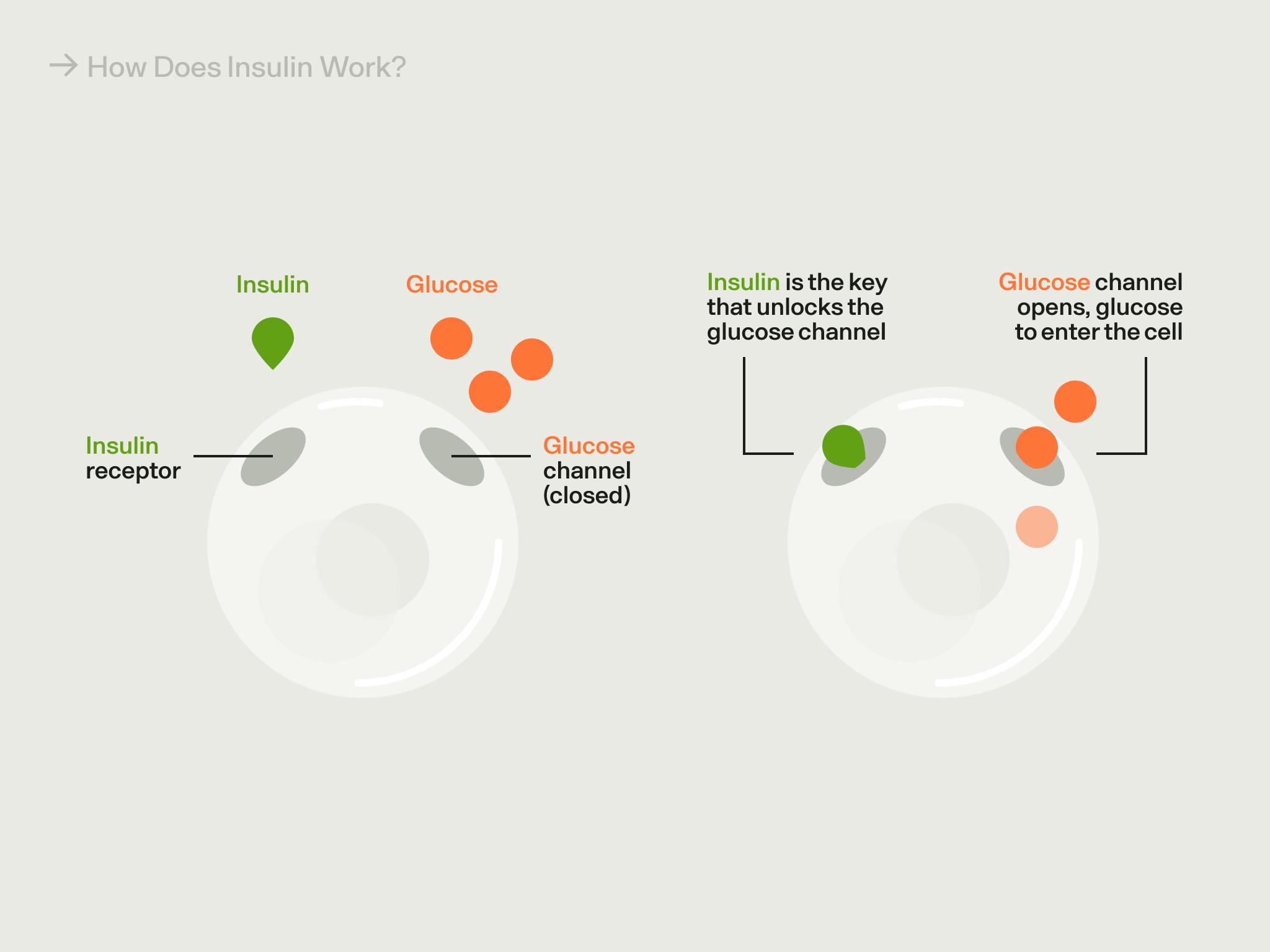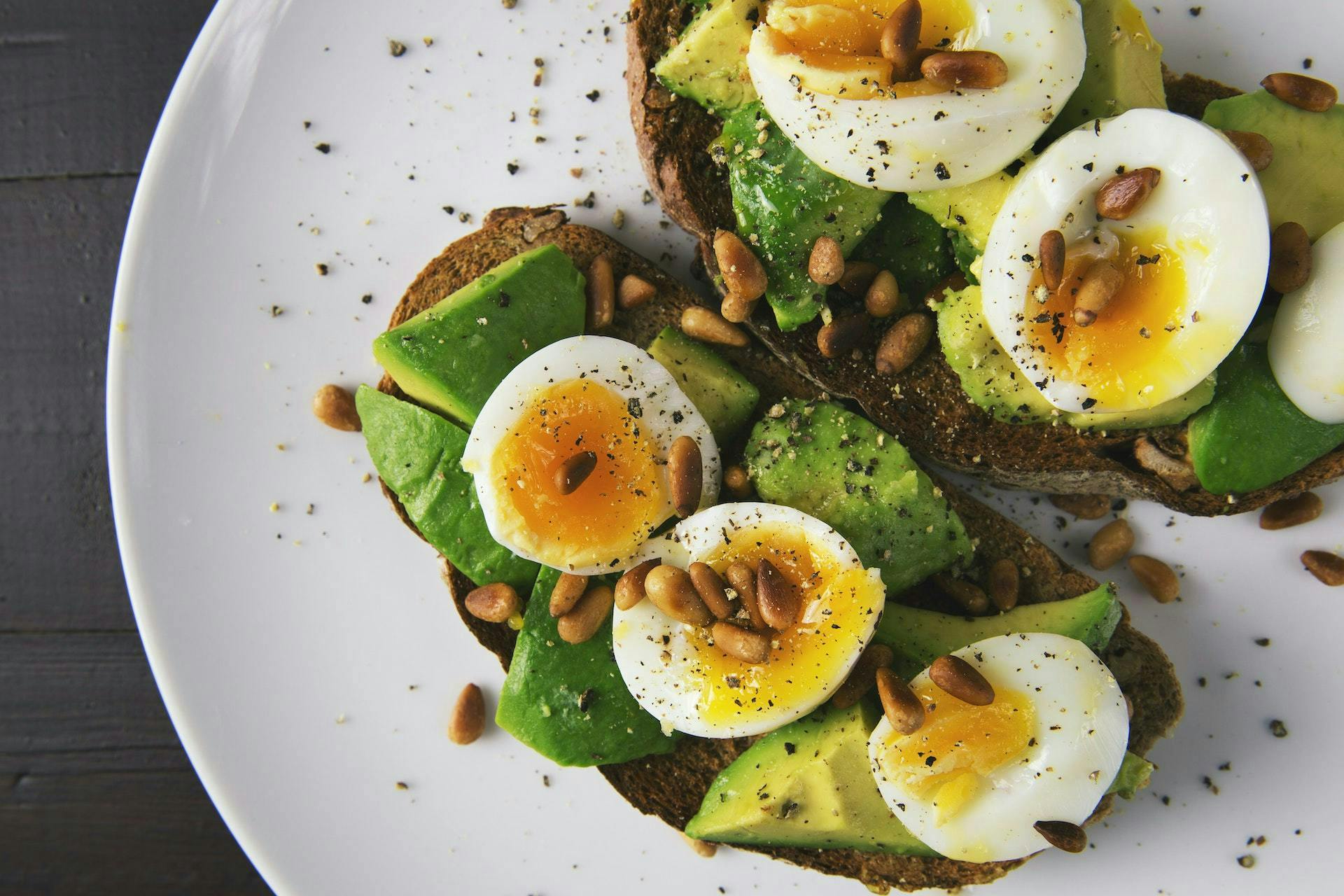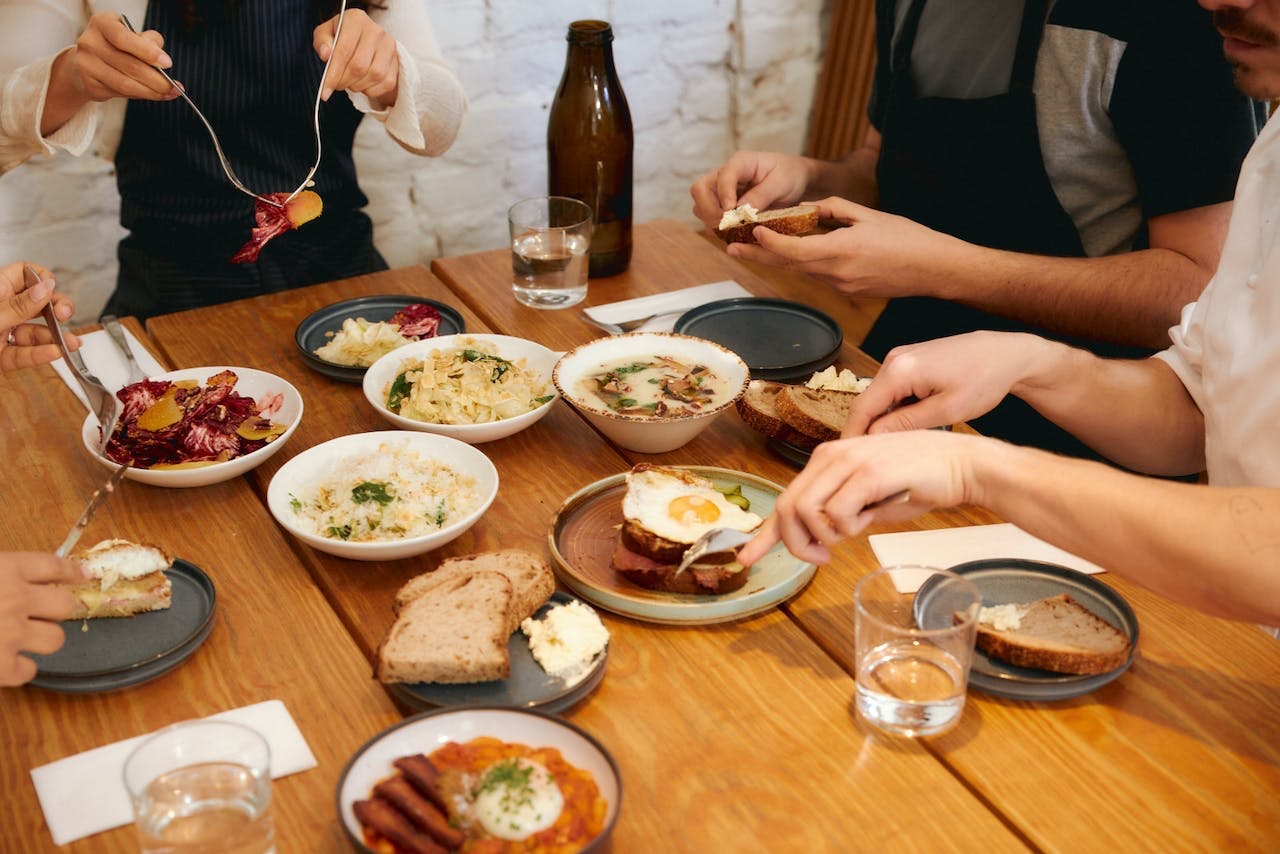Metabolism is necessary for the survival of all living organisms. It allows you to breathe, circulate blood, fight infections, repair cells, and make new proteins, just to name a few among countless other roles. But what exactly is metabolism, and how does it work?
How does your metabolism work?
Your metabolism is a tightly regulated and highly organized system of biochemical reactions that converts food into energy and keeps your body in homeostasis, or biological balance [1]. It constantly runs to maintain your body temperature, move your muscles, and keep you alive and functioning.
The fuel for your metabolism is the food you consume.
When you eat, your digestive system breaks down macronutrients (i.e., carbohydrates, proteins, and fats) into smaller components that are absorbed into your bloodstream and circulated throughout the body. Then they’re converted into the energy that powers your brain, heart, lungs, and muscles, as well as all other organ systems.
But these macronutrients aren’t all the same — your body metabolizes them in different ways. Understanding these distinctions is key to understanding your metabolic health, and is a great starting point for developing better eating habits.
So what exactly happens in your body after you take a bite of food? Throughout the article, we’ll use the example of eating a cheeseburger — which has carbs, protein, and fat — to explain how each component of food is metabolized.
Carbohydrate metabolism
Carbohydrates are broken down into glucose (your body’s preferred energy source) through a process aptly named carbohydrate metabolism [2]. This allows your body to choose between using glucose as energy immediately or storing it for later use.
When you eat a cheeseburger, the carbs from the bun and vegetables will be digested and broken down into smaller molecules, called monosaccharides and disaccharides, which are chains of sugar. These are then absorbed into the bloodstream through transporter molecules in your small intestine — which results in your blood glucose (or blood sugar) rising.
Once in your bloodstream, these molecules of glucose make their way to cells in your body that need them for energy, and wait to be let into the cells by the hormone insulin.

Insulin unlocks your cells so that glucose can enter and be turned into energy.
But what happens once glucose is inside of a cell?
After insulin lets it pass through the cell membrane, glucose is broken down into smaller molecules (called pyruvate) through a process called glycolysis and shuttled into the mitochondria, the energy factory of your cell, where it’s used to produce adenosine triphosphate (ATP) [4].
ATP comes up a lot in cell metabolism — it’s a molecule that can carry energy throughout cells and provide energy for reactions to keep our cells (and us) alive.
In other words:
- You eat carbs (like the bun and veggies in a cheeseburger).
- The carbs get broken down into glucose by enzymes in your saliva and small intestine.
- The glucose enters your blood stream (elevating your blood sugar) and travels to cells throughout the body.
- The pancreas releases insulin to unlock cells and allow glucose to enter.
- Glucose is broken down into pyruvate and taken to the mitochondria, where it becomes ATP.
After you eat and metabolize the carbohydrates from the bun and vegetables, there may still be a surplus of glucose. If there’s already enough glucose in your body, and adequate levels of ATP, glucose will instead be sent to your liver and muscles for storage in the form of glycogen — energy your body can use later on.
Protein metabolism
After digesting the proteins from the meat in your cheeseburger, amino acids (the building blocks of proteins) can be circulated in the body and used by your cells.
The main role of amino acids is to make new proteins that your cells need to function. These include, but are not limited to:
- the proteins involved in tissue repair (i.e., after a grueling workout or injury)
- enzymes (which help speed up the chemical reactions in your body, including breaking down your food)
- transport proteins (“vehicles” that shuttle various compounds around in your body and across membranes)
The beef patty in our cheeseburger example contains isoleucine, valine, threonine, and methionine — four of the amino acids that can be converted into glucose.
Your body will digest the patty and use some of the amino acid building blocks to make new proteins, while others may undergo gluconeogenesis and become glucose that your body can use directly as fuel or further transform into fat via a process known as lipogenesis.
Lipid metabolism
Lipid metabolism is the process of breaking down and using fats and fatty acids for energy [8]. This breakdown of lipids is necessary to provide energy for the body, and it also serves as a source of building blocks for new cells and hormones.
The beef and cheese of your burger contain fat, and when you eat these, your digestive system first breaks down the lipids, composed of molecules called triglycerides into their individual components of glycerol and free fatty acids. Your liver will use the fatty acids and convert them into glucose for metabolism.
This is done via a process called beta-oxidation, which results in a molecule called acetyl-CoA that can be used to aid the production of ATP (the energy-carrying molecule).
What happens between meals?
We know now what happens to carbohydrates in an absorptive state (when food is actively being digested and nutrients absorbed), but what about in between meals, while you sleep, or if you skip meals?
Remember — your metabolism keeps your body running, and has a number of intricate systems in place to ensure there is always a source of glucose/ATP to power your organs, particularly your brain and heart.
Once you’ve eaten, you typically don’t eat again until your next meal. In other words, you enter a fasting state.
Once glycogen stores begin to get depleted, your body uses gluconeogenesis to supply the glucose it needs to function when glycogen stores in the liver are running low.
This can happen after about 8 hours of fasting, when you’re on a low-carb diet, and while you’re sleeping. (Since gluconeogenesis takes time, the newly formed glucose is released into the blood slowly and doesn’t raise blood sugar.)
When there aren’t enough glucose or fatty acids readily available for energy, insulin can help regulate blood sugar levels by increasing circulating fatty acids when necessary [10]. It signals adipose tissue (fat tissue) to liberate and release stored lipids, which can then be transported to the liver for eventual ATP production.
In an ideal world, your body is able to supply glucose to your cells from all three macronutrients. That said, conditions such as insulin resistance or metabolic dysfunction can disrupt your body’s ability to make glycogen — meaning that your body can’t properly maintain a supply of “back-up” glucose to create energy [11].
Understanding your metabolic health — which often begins with a tool like a CGM that allows you to track your blood glucose levels in real-time — is a critical part of ensuring that your body’s intricate metabolic balancing act is functioning properly — and thus allowing you to continuously have the energy to survive [12].
Key Takeaways
Many different processes contribute to metabolism, including digestion and absorption of food, as well as chemical reactions that occur throughout the body. Metabolism is an ongoing, dynamic process that helps your body maintain a state of energy homeostasis.
- Different metabolic reactions and processes occur depending on whether your body is in a fed, state or fasted state.
- Carbohydrate metabolism lets our bodies use glucose for energy, but changes in blood sugar levels can shift this.
- Amino acids are used as building blocks for our cell’s proteins but can be made into glucose when lipid and carb levels are very low and glucose levels drop.
- Lipids are stored as fat or, when blood sugar decreases, can be converted to glucose to be used as energy
- Learning how your body responds to these fluctuations in nutrients can be the starting point towards mending or improving your metabolism.
References:
- https://www.ncbi.nlm.nih.gov/books/NBK26882/
- https://www.sciencedirect.com/science/article/abs/pii/S0009912013001677
- https://www.ncbi.nlm.nih.gov/pmc/articles/PMC7825450/
- https://www.ncbi.nlm.nih.gov/books/NBK26882/
- https://www.sciencedirect.com/topics/neuroscience/ketogenic-amino-acid
- https://www.frontiersin.org/articles/10.3389/fendo.2018.00802/full
- https://econtent.hogrefe.com/doi/abs/10.1024/0300-9831/a000064?journalCode=vit
- https://www.frontiersin.org/articles/10.3389/fendo.2017.00228/full
- https://www.frontiersin.org/articles/10.3389/fendo.2017.00228/full
- https://journals.physiology.org/doi/full/10.1152/physrev.00024.2006
- https://cardiab.biomedcentral.com/articles/10.1186/s12933-018-0762-4
- https://www.cambridge.org/core/journals/proceedings-of-the-nutrition-society/article/circadian-regulation-of-lipid-metabolism/04F8C6F3A26439D3F3F89AE30217AFB2


